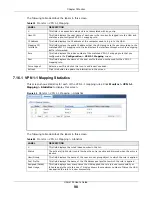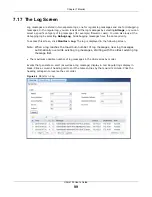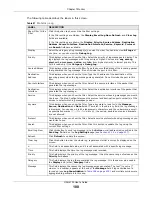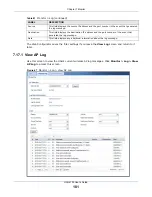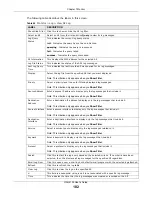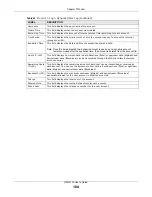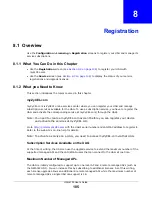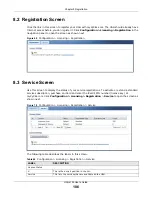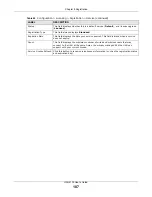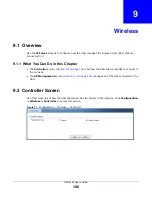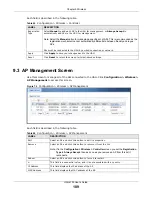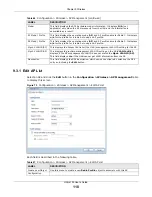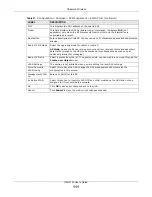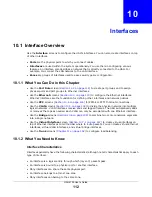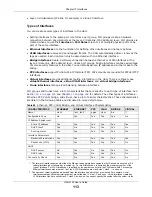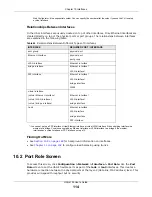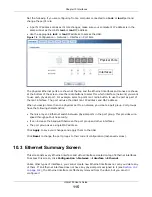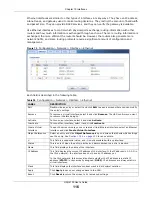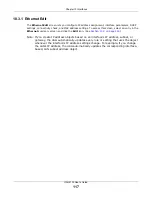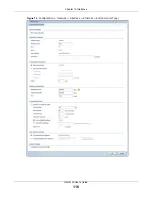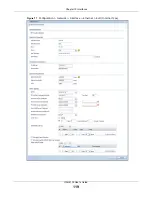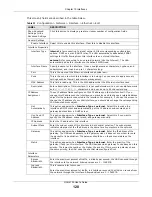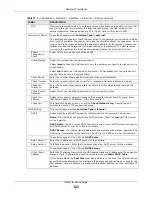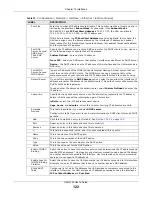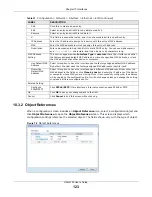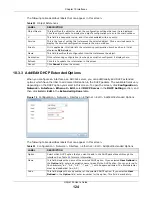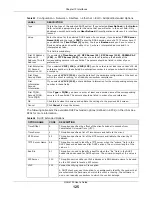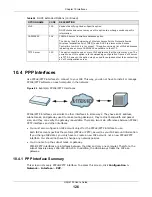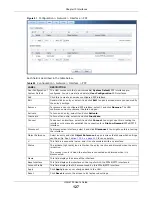
UAG4100 User’s Guide
112
C
H A P T E R
1 0
Interfaces
10.1 Interface Overview
Use the
Interface
screens to configure the UAG’s interfaces. You can also create interfaces on top
of other interfaces.
•
Ports
are the physical ports to which you connect cables.
•
Interfaces
are used within the system operationally. You use them in configuring various
features. An interface also describes a network that is directly connected to the UAG. For
example, You connect the LAN network to the LAN interface.
•
Zones
are groups of interfaces used to ease security policy configuration.
10.1.1 What You Can Do in this Chapter
• Use the
Port Role
screen (
) to create port groups and to assign
physical ports and port groups to Ethernet interfaces.
• Use the
Ethernet
screens (
) to configure the Ethernet interfaces.
Ethernet interfaces are the foundation for defining other interfaces and network policies.
• Use the
PPP
) for PPPoE or PPTP Internet connections.
• Use the
VLAN
screens (
) to divide the physical network into multiple
logical networks. VLAN interfaces receive and send tagged frames. The UAG automatically adds
or removes the tags as needed. Each VLAN can only be associated with one Ethernet interface.
• Use the
Bridge
screens (
) to combine two or more network segments
into a single network.
• Use the
Virtual Interface
screen (
) to create virtual interfaces on
top of Ethernet interfaces to tell the UAG where to route packets. You can create virtual Ethernet
interfaces, virtual VLAN interfaces, and virtual bridge interfaces.
• Use the
Trunk
) to configure load balancing.
10.1.2 What You Need to Know
Interface Characteristics
Interfaces generally have the following characteristics (although not all characteristics apply to each
type of interface).
• An interface is a logical entity through which (layer-3) packets pass.
• An interface is bound to a physical port or another interface.
• Many interfaces can share the same physical port.
• An interface belongs to at most one zone.
• Many interfaces can belong to the same zone.

